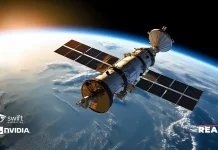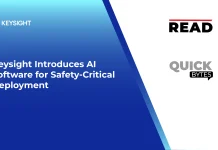Vaccinations are an integral part of our lives, with almost everyone receiving various vaccines starting from childhood through adolescence. From essential shots like those for polio to the more recent COVID-19 injection, we have come to understand the significance of vaccination and immunization. It is widely acknowledged that vaccinations play a crucial role in safeguarding public health and individual well-being.
In this blog, we will explore how the vaccine works, how advancements are reshaping vaccinations, and their significant impact on individuals.
What are Vaccines?
Vaccines are simply a way to improve immunity to a particular disease. They teach the body’s immune system to recognize and defend against harmful germs, such as viruses and bacteria. Vaccinations are administered through various methods, such as injections, pills, or nasal sprays. They play an essential role in protecting individuals and communities from serious, often deadly diseases.
Vaccinations are the safest and most effective way to prevent many preventable diseases and protect people in the community, such as young children, the elderly, and those who are too sick to be immunized. The massive use of vaccination has boosted its demand on a global scale. According to the latest report from Extrapolate, the global vaccine market is likely to be valued at USD 150.50 billion by 2030.
How do Vaccines Work?
A vaccine can mimic what happens in the body when it is attacked by a germ without causing illness. Most vaccines contain killed or weakened microorganisms and do not put the individual at risk. When vaccinations are administered, the body triggers the immune system to naturally produce antibodies that fight against the disease. The body then memorizes how to combat a particular disease. If the body encounters a similar germ in the future, the immune system will remember how to quickly destroy it before causing illness.
Common Types of Vaccines
There are several vaccine types; some of the most commonly used vaccinations include:
● Viral Vector-based
This vaccine uses viral vectors to trigger an immune response and is used to protect against various diseases.
● Toxoid
Toxoid uses a toxin produced by the viruses or bacteria that develop immunity to the specific parts of the germ that cause disease instead of the germ itself.
● mRNA
mRNA vaccines make proteins to trigger an immune response and offer several benefits compared to other types of vaccinations, including shorter manufacturing times and no risk of causing disease.
● Live-attenuated
This vaccine contains live viruses that have been weakened or altered to prevent illness. They are known as the most effective vaccinations and often require one or two doses for lifetime immunity. However, physicians do not recommend live-attenuated vaccines for individuals with weakened or damaged immune systems.
● Inactivated
This type of vaccine contains all pathogens that have been killed or weakened, rendering them incapable of causing disease. They stimulate robust immune responses, protecting against various diseases.
● Subunit, Recombinant, and Polysaccharide
These vaccinations consist of specific pieces of the bacteria or virus and can elicit a protective immune response.
Advancements in Vaccines: Reshaping the Healthcare Landscape
Below are the latest advances in the vaccination field that are revolutionizing the administration of various life-threatening diseases.
● MAPs
Microarray patches, or MAPs, have the potential to revolutionize the accessibility of vaccines in low- and middle-income countries (LMICs). These patches, covered with tiny needles coated in the dry vaccine or a formula that dissolves when pressed onto the skin for 2–5 minutes, are lightweight, do not require cold temperatures to store, and can be used by beginners in healthcare in almost any condition.
In this field, PATH, an organization, offers the MAP delivery technology platform as well as high-priority vaccine and essential medicine global health needs. It is well known for its vaccinations, drugs, medical devices, diagnostics, and digital tools used for various diseases.
● RSV Vaccine
Respiratory syncytial virus (RSV) poses a significant threat to young children and elderly adults globally, with most hospitalizations and deaths occurring in low- and middle-income countries (LMICs). Current strategies include passive immunization, single-dose monoclonal antibody immunization, and live attenuated or mRNA vaccines.
Advancements in this field include the maternal RSVpreF vaccine called ABRYSVO from Pfizer, which provides 70–80% protection for infants up to 6 months after birth. It is non-adjuvanted, composed of two preF proteins, and prevents lower respiratory tract disease (LRTD) and severe LRTD caused by RSV in newborns.
● Malaria Vaccine
Malaria studies have found promising results with RTS-S and R21/Matrix-M. These vaccinations target a specific protein on the malaria parasite and show efficacy of 67–75% in adults and up to 80% in children aged 5–17 months.
These vaccinations meet safety standards and maintain good antibody levels for over two years after the primary vaccination. R21/Matrix-M is also recommended by the World Health Organization (WHO) as a safe vaccination approach for malaria prevention in children.
Winding Up
Vaccines stand as a critical tool in safeguarding public health by training the body’s immune system to recognize and defend itself against harmful pathogens, including bacteria and viruses. Various types of vaccinations, including mRNA, viral vector-based, toxoid, live-attenuated, inactivated vaccinations, and subunit, recombinant, and polysaccharide vaccinations, protect individuals from a wide range of preventable diseases.
Vaccinations not only protect individuals but also contribute to collective immunity-boosting. As a result, vaccinations play a pivotal role in preventing the spread of infectious diseases and maintaining public health and safety, making them an indispensable component.
Browse More Posts:-
Body Sealing System Market
Commercial Aircraft Turbine Blades Vanes Market
ESS for Railways RBS Regenerative Braking System Market
Electric Order Pickers Market




